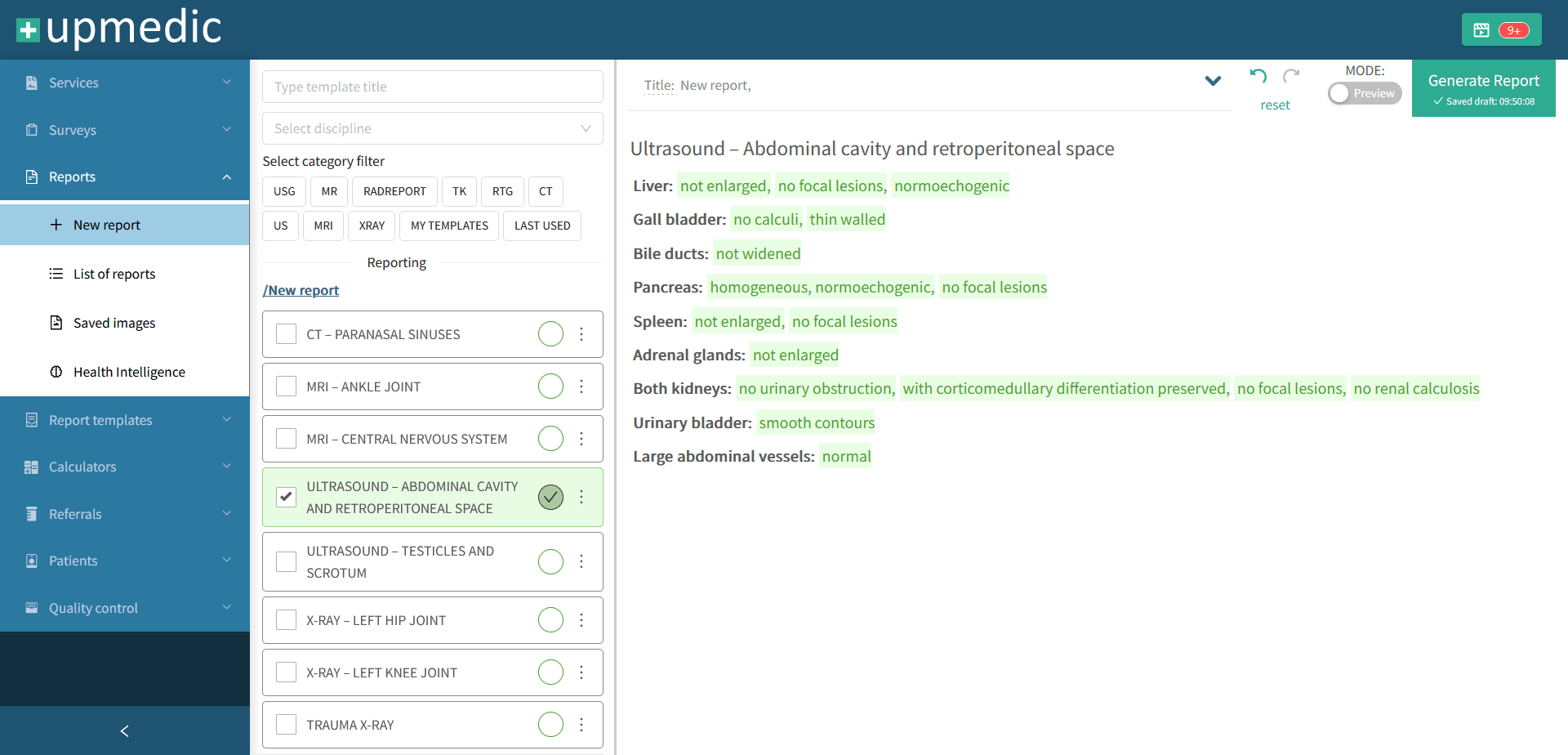Our partners
Main benefits for you and your clinic
Built-in structured report templates
RECIST 1.1 & PI-RADS included
Auto-integration with your EHR/RIS/HIS
Try our simplified data input process
Autocomplete
Autocomplete helps save time by automatically filling in the rest of the words and by suggesting next phrases as you type, so you don't have to type the entire word.
Checklist
Predefined or user-defined structured phrases can be rapidly selected by mouse clicks, which instantly adds them to the report.
Speech recognition
AI-controlled speech recognition learns from your own templates and allows for hand-free report creation, simultaneous with diagnostic work.
Standard-compliant
upmedic auto-integrates with popular systems like Asseco, Kamsoft, or Comarch. Using latest technology, we set new data flow standards at medical facilities to automate recurring tasks and minimize bureaucracy.
upmedic supports:
HL7 CDA
DICOM SR
MRRT
FHIR
SNOMED CT
The main advantages of using upmedic
Bring your own templates and benefit from using upmedic from day 1
Structured speech recognition
Standard clinical terminologies like SNOMED CT
Easy integration with medical facility IT systems
Simple use of complex scales like RECIST 1.1 and PIRADS
Upload your own templates or customize those from a public library
100+ expert-created templates
In-cloud and on-premises
How you save reporting time?
Real-life data from upmedic app shows time required to create various reports
Pick template:
MRI – Sacroiliac joint
MRI – Elbow joint
MRI – Knee joint
MRI – Wrist joint
MRI – Ankle joint
MRI – Central nervous system
MRI – Hip
MRI – Shoulder joint
MRI – Cervical, thoracic and lumbar spine regions
MRI – Lumbar
MRI – Chest
X-ray – Cervical, thoracic and lumbar spine regions
X-ray – thoracic spine
X-ray – knee joints
X-ray – Left hip joint
X-ray – left knee joint
X-ray – chest
X-ray Lumbar
X-ray – the lumbosacral spine
Trauma X-ray
X-Ray – Lower limb
X-Ray – Shoulder joint
CT – Head
CT – Paranasal sinuses
US – Abdomen
Average time without upmedic
23:12
Average time with upmedic
7:27
How users create reports so fast?
upmedic uses different methods to create documentation faster, without sacrificing quality or completeness:
- Text structurization
- Keyboard input accelerated by autocomplete feature
- Mouse or voice-controlled input, selection-based to avoid typing
- Auto-formatting nd punctuation
- Tracking mutually exclusive phrases in terms of semantics
